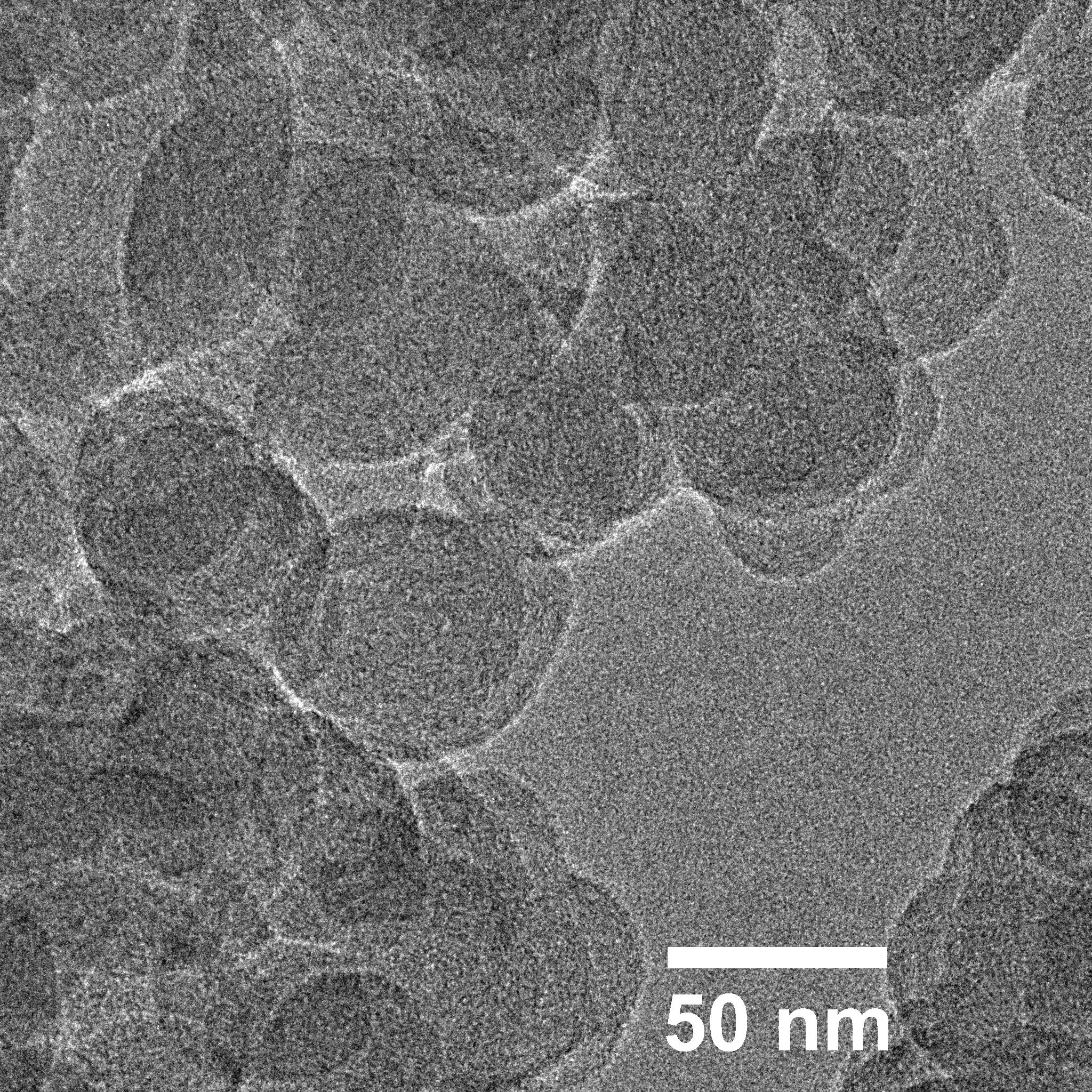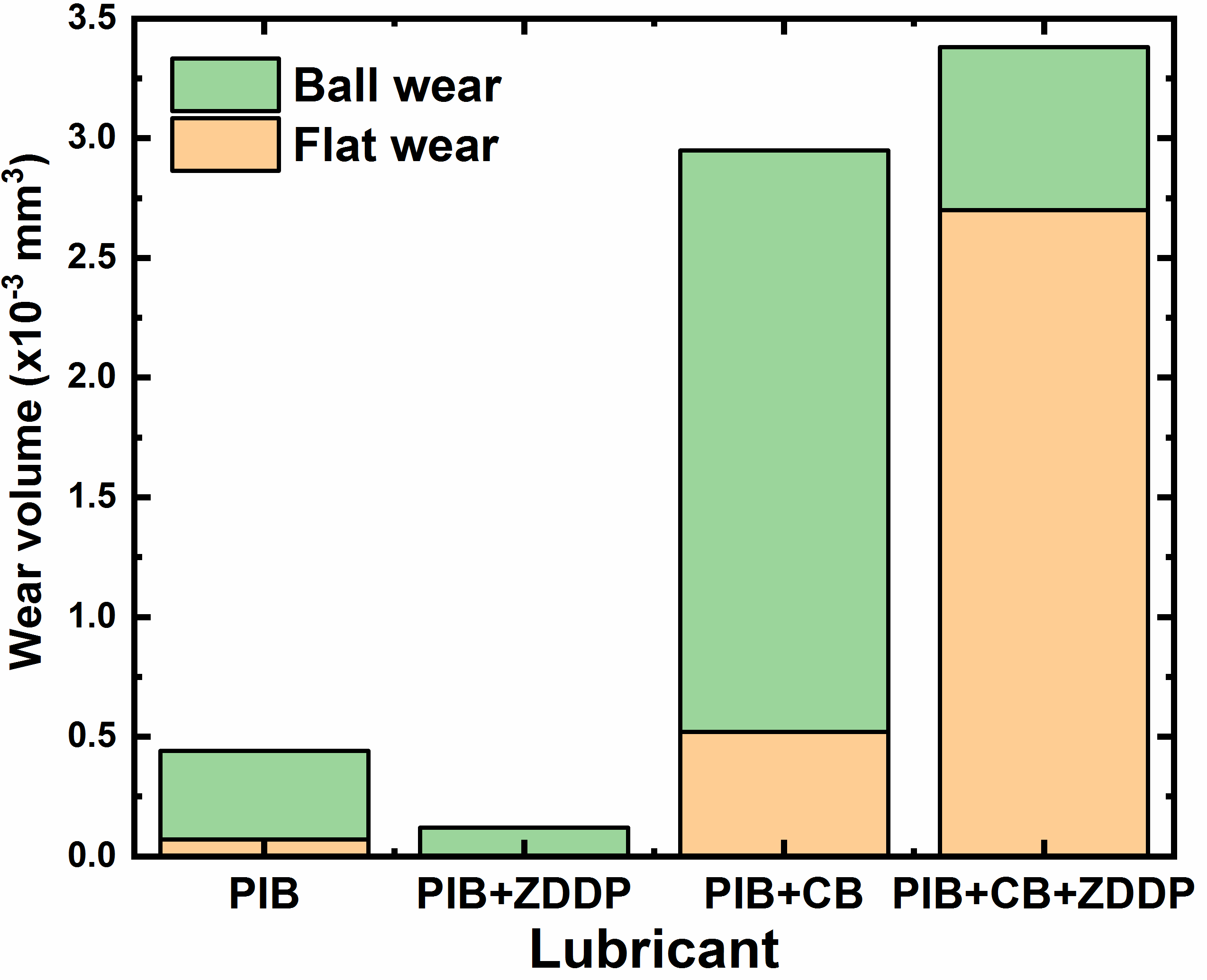same when lubricated by PAO+CB and PAO+CB+ZDDP, the ball/flat wear ratio was reduced from more than 2:1 (CB alone) to less than 1:3 (CB+ZDDP).


Figure 1. (a, left) Morphology of the CB used in this study; (b, right) Wear volumes for 52100 steel ball against M2 tool steel flat in PAO+PIB containing ZDDP alone, CB alone, and both ZDDP and CB.
Results here could not be explained by the recent hardness hypothesis proposed by Spikes4, because the 52100 bearing steel, M2 tool steel, and A2 tool steel have similar hardness, 878, 876, and 821 HV. Instead, a combination of adhesive wear, abrasive wear, and catalyzed tribo-corrosive wear is proposed. In PAO+CB, the increased wear may be ascribed to the CB-induced abrasive wear and consequently adhesive wear due to significantly roughened contact surfaces, as revealed by worn surface characterization. In contrast, the wear scars generated by PAO+CB+ZDDP appeared much smoother and are covered by significant amounts of tribochemical reaction products with ZDDP based on surface chemical analysis. This implies a tribo-corrosion on the M2 or A2 steel flat. The CB could act as a catalyst to trigger the tribo-corrosion between ZDDP and the M2 or A2 steel surface, in a similar manner to the DLC coating-catalyzed tribo-corrosion reported earlier.5 But why did the 52100 steel ball have a wear reduction instead? Comparing the alloy compositions for the 52100 bearing steel with these two tool steels, the element standing out is Mo, which accounts for 4.5-5.5% in the M2 steel and 0.9-1.4 in the A2 steel, but less than 0.1% in the 52100 steel. Mo seemed to be necessary for the hypothesized tribo-corrosion. To further understand the wear mechanism, five additional material pairs were tested: 52100 steel ball against 52100 steel and silicon nitride flat and M50 tool steel ball against 52100 steel, M2 tool steel, and silicon nitride flat. Results showed consistent wear reduction for the 52100 steel and wear increase for M-series tool steel when ZDDP was introduced to the CB-containing oil, which supported the Mo-involved tribo-corrosion hypothesis. In summary, the wear behavior and mechanisms in the CB-containing oil highly depend on the presence of ZDDP as well as the compositions and mechanical properties of the two contact surfaces.
ACKNOWLEDGEMENTS: Authors thank Cummins for providing the carbon black, ExxonMobil for providing the PAO and PIB, and Shell for providing the ZDDP, respectively. Research was supported by the Vehicle Technologies Office, Office of Energy Efficiency and Renewable Energy, U.S. Department of Energy.
REFERENCES: (1) Olomolehin, Y. Kapadia, R. Spikes, H., Tribology Letters 2009, 37, 49. (2) Schilowitz, A. M.; Konicek, A. R., Wear 2017, 376-377, 771. (3) Hu. E, Hu. X, Liu. T, Fanga. L, Dearn. K, Xu. H, Wear, 2013, 304 152 (4) A. Kontou, M. Southby, H.A. Spikes, Wear 2017, 390-391, 236. (5) Y. Zhou, D.N. Leonard, H.M. Meyer, H. Luo, J. Qu, Advanced Materials Interfaces 2015, 2, 1500213